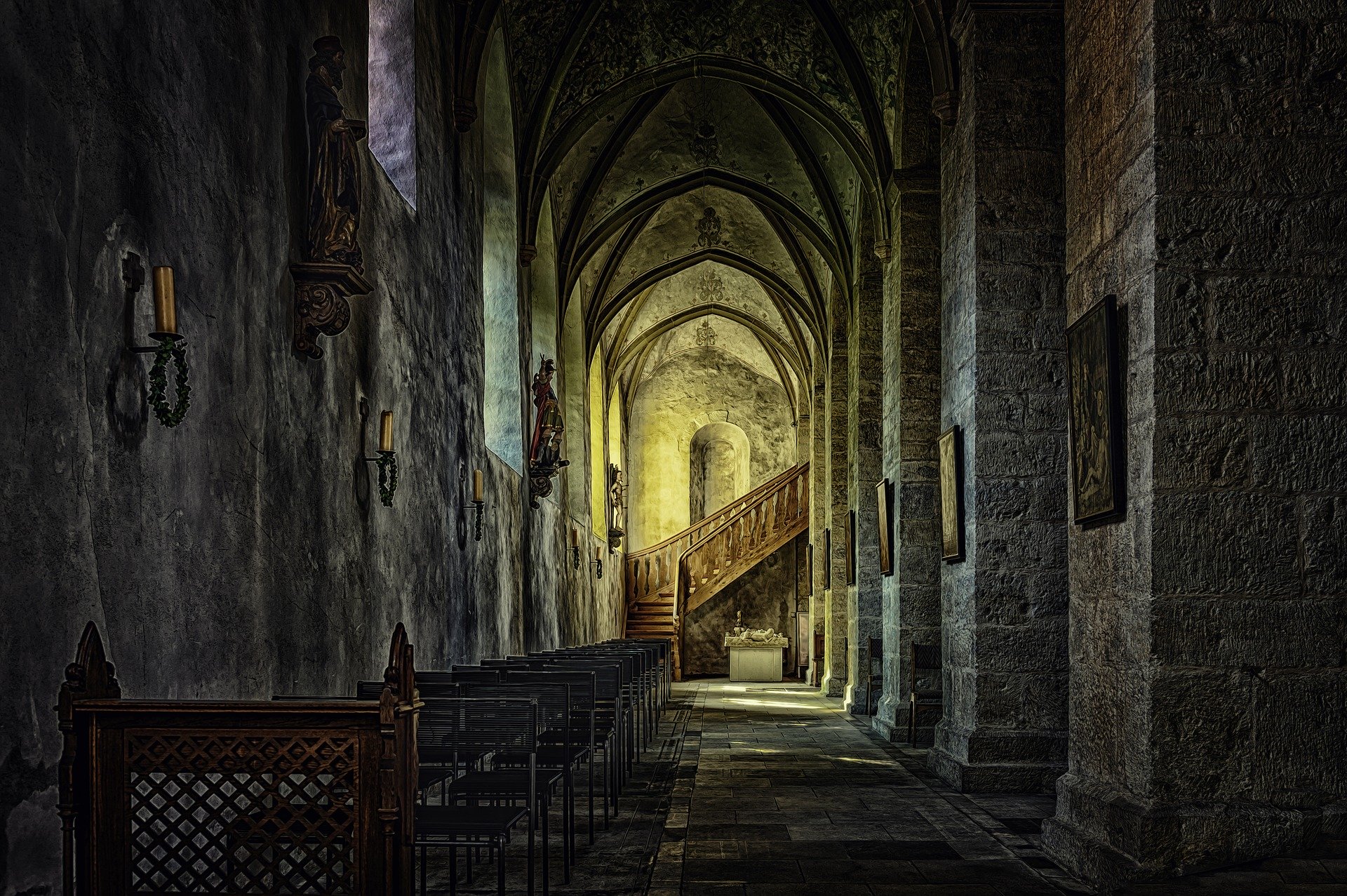I was hoping to get to this specific post a little sooner, but circumstances intervened in a number of different ways. This is going to be another breakdown of translating a specific style of game (in this case with only one real entry) from the realm of video games over to a TTRPG environment. The first time I tried this with the “soulslike” genre it went on for three posts that you can find here, here, and here. I’m hoping this time for just one or two.
I should mention that if you’re just looking for Darkest Dungeon monsters in a form you can use in your home game, there is an excellent treatment of that available here. There’s also a selection of themed character options here. (Some interesting choices in that latter product. Notably, I don’t think I’d have chosen Paladin for the plague doctor.)
Breaking it Down
Darkest Dungeon comes with a number of specific challenges that make it harder to translate to a TTRPG than the Soulslike genre, probably most notably that it’s not an RPG, but a strategy game. Darkest Dungeon, despite the name and aesthetics, has much more in common with XCOM than D&D. Your heroes are (for the most part) gone when they die, they’re free to replace, and they’re put through various turn-based battles with a heavy emphasis on positioning. The maps are side-scrolling rather than 2D or 3D, but those core elements remain.
Other particularly strong elements are injury, illness, and psychological strain in the face of cosmic horror. But here’s the thing – that doesn’t happen to an avatar of the player, rather, it happens to NPCs they hire to clean out the horrors infesting the estate. Especially early on, but continuing throughout the game, mortality among heroes is pretty high. You have to manage useful gear and treasure in your very limited inventory space, and characters cracking under the strain and getting themselves and/or some or all of their party killed is definitely a concern.
I also consider the narrator to be a key distinguishing element, along with the art. There’s a very strong aesthetic.
The cosmic horror elements are an interesting mixed bag. The narrator, up to the end, is determined that the situation is ultimately futile and yet various heroes including the vestal, crusader, flagellant, and abomination all wield some measure of genuine holy, restorative power.
There’s also the matter of upgrading (restoring) the hamlet where negative conditions removed and a number of enemy factions, each tied to a specific region. The Cove has fish monsters, The Warrens have the swinefolk, and so on.
Building the Game
There are actually a number of different ways you could go with this. You could set up a mega-dungeon, use a punishing rule set and play a very harsh, old-school game of basically doomed adventurers trying to scour out a nasty dungeon. Not to put too fine a point on it, but that describes entire product lines in the TTRPG industry and while lots of people enjoy that style (and a vocal minority of them loudly insist it’s the only way anyone should be allowed to play TTRPGs at all) it’s not really my bag and frankly it’s kind of a solved problem. If you want punishing, old-school dungeon crawling, the entire OSR movement is there for you to enjoy. Select a system you like, roll up some characters and have a blast.
What I’d suggest, though, is that there’s another possibility that I, at least find much more compelling, and that is putting the PCs in the same role as they embody in the game – not the doomed heroes slogging through the mud, but the people in charge.
The overarching narrative of Darkest Dungeon is that the player (who much like the commander in XCOM exists in the world but never appears on screen) is a noble of some sort, summoned back to their family’s ancestral estate by an ancestor who has meddled with tons of dark magic and thereby screwed up terribly and has realized it just before the self-inflicted end. (That’s not a spoiler, that’s the opening cut scene.) This also makes for a very compelling narrative foundation.
Placing the PCs in the role of the people in charge gives them a nasty, thorny problem that isn’t their fault but thanks to the rules of hereditary nobility is absolutely their responsibility. Abdicating that responsibility and just walking away will also have dire consequences for the world at large. And the problem is multifaceted. Their holdings are crumbling and overrun with cultists, monsters, and general land-warping corruption. Their ancestor ran through the family coffers, so they’re (mostly) broke. Everything needs to be cleaned out and renovated, physically, financially, and spiritually.
This comes with some neat advantages from a campaign-framing perspective. First of all, the PCs are tied to a specific (large) piece of territory that can be built up to a high level of detail and this naturally allows for a recurring NPC cast. The process of gradually cleaning out and purifying the dangerous areas gives a natural sense of progression and also a sense of accomplishment. Finally, giving the PCs political power rather than just combat puissance lends itself to a whole different set of storytelling tropes. Rather than being hired by the baron, they are the baron, and they may well hire adventurers themselves to help with their problems (though most PCs will also want to get their own hands dirty and that’s totally fine).
As far as resources go, for 5e (my current system of choice) I’d personally recommend Matthew Coville’s Strongholds and Followers. It provides some abstracted rules for owning and running some holdings while still providing the PCs with the ability to go adventuring. If you want to include the cosmic horror elements, Sandy Petersen’s Cthulhu Mythos is a good resource (though as I always do, I’m going to caveat that with a warning to watch out for the unexamined racism in anything influenced by Lovecraft). However, I’d also say that if you’re looking to do something similar in feel, but different in theming, the sky is the limit for what could be infesting the PCs’ holdings. As I mentioned recently on the podcast, I’ve been reading some Conan stories, and the kind of pulp fantasy ancient evils you find in there would work, but so would actual fiends (demons, devils, etc.), a court of evil fey, a crime family or society of assassins, an assortment of minor draconic beings, and so on. The source material has the following loose enemy types: cultists, bandits, undead, sea monsters, swine folk, corrupted nature, decadent nobility turned horrible mosquito vampires, and cosmic entities. Several of these groups are confined to a single area, a few can be found anywhere (such as the cultists).
If you’re building up an enemy faction, it’s a good idea to make sure it includes monsters that can scale from CR 1/4 up to CR 15 or so. You want to be able to convey the sense of finding nastier and nastier stuff as you get closer to the heart of the corruption. You can give them goals, but in some cases, they may not need them – insane cultist may want something long-term and scheme accordingly. Ravenous worm beasts probably just want food. By the way, when theming, don’t get too hung up on the type line. If one of your factions is evil fey, you can probably get away with things like harpies and manticores in that faction. If it’s fiends, feel free to freely mix among types unless you want them to be distinct groups.
You probably also want to set a required minimum level of PC-driven activity to keep the crisis contained, but I wouldn’t make it too punishing – if you look at the play time of a successful Darkest Dungeon campaign where the final boss is defeated, it’s often years and years of in-game time. I write that as a reminder to myself as much as other GMs out there. I have often been guilty of “foot on the gas GMing” where the PCs dash frantically from urgent threat to the next with barely any time in between to rest or even process what happened. That can be fun, but it’s also a bad pace to set in this style of game – let the seasons pass. Let PCs have long-term projects. You can’t cleanse an entire corrupted estate in a week. The gradual sense that things are getting better and the PCs are carving out a pocket of safety is a nice reward loop, too.
This can also be darker or lighter than the source material. The hamlet in Darkest Dungeon has a number of places where the heroes can deal with the lingering strain of their trips into the various corrupted areas, often through highly questionable means. You can dial up or down the effectiveness of those means, how expensive they are, and how questionable they are to suit your needs. In fact, you can adjust how necessary they are, as well. You may not want to track a bunch of diseases, injuries, and lingering mental health effects or your players may not think that sounds like fun. Like with any campaign frame, feel free to adjust according to taste without worrying overmuch about remaining slavishly true to the source material.
Conclusion
Phew! Got it in one this time. As always, I’m interested to hear your thoughts. In particular if you think I missed anything important, or even better, if you have another specific style of game you have adapted or are drawing on heavily for inspiration.




